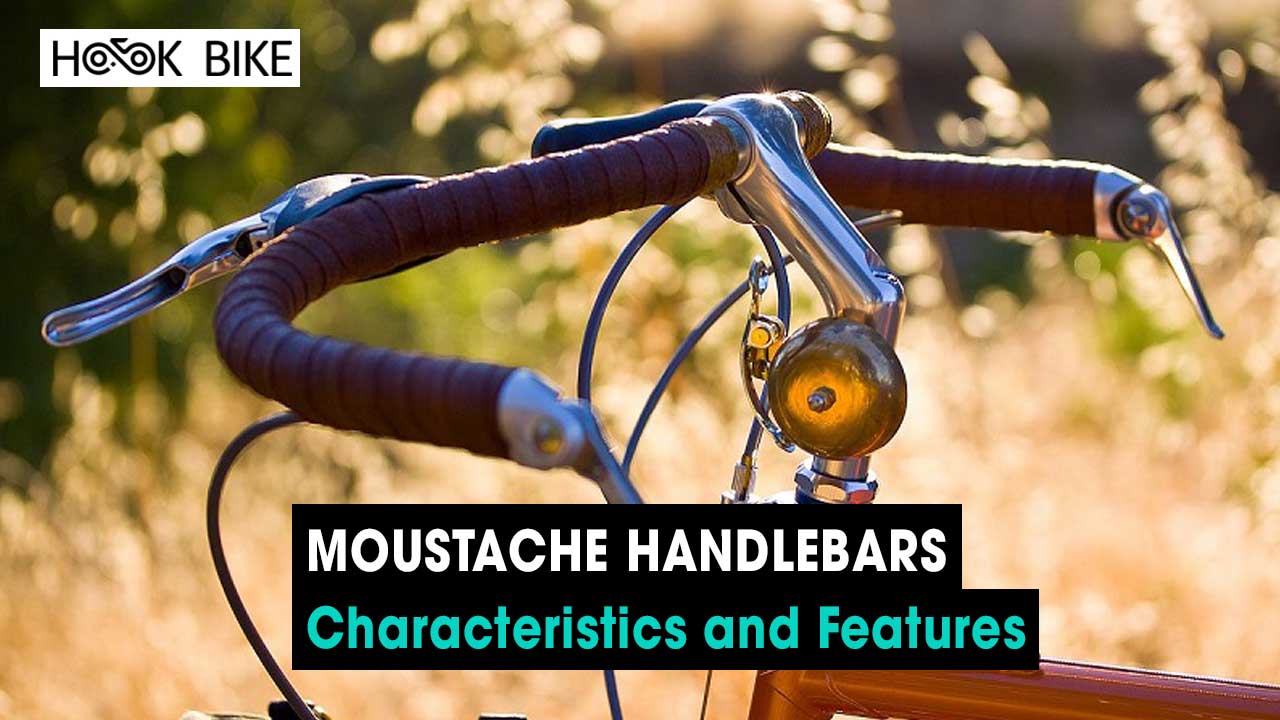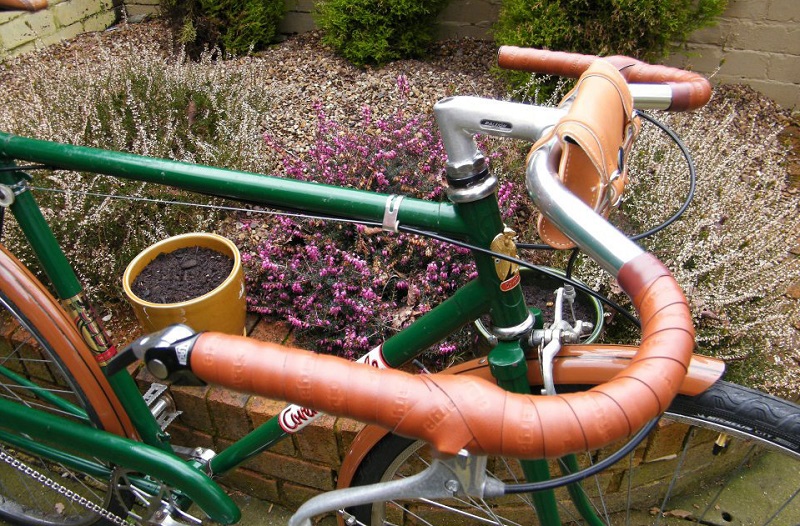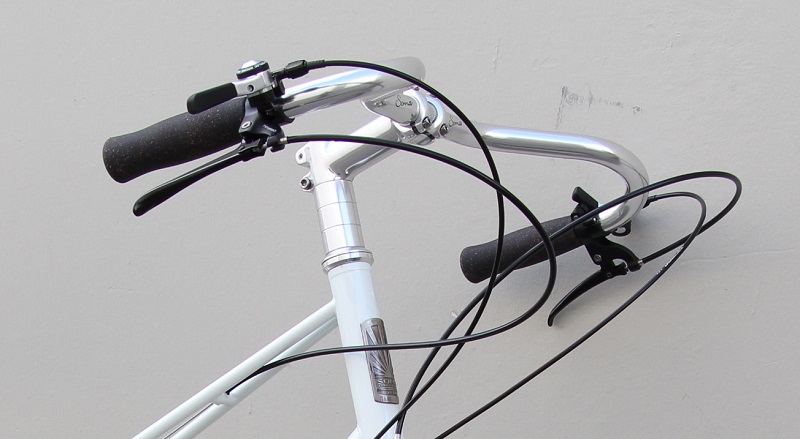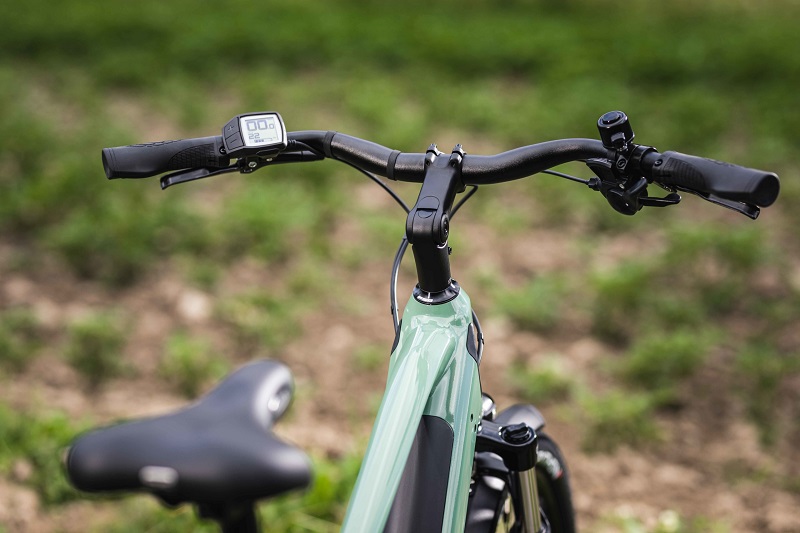Parts
Moustache Handlebars: Characteristics and Features
In today’s world of cycling enthusiasts, the Moustache Handlebars have gained immense popularity, not just for their unique aesthetics but also for their functional characteristics. As bicycle aficionados, we pride ourselves on understanding every nuance of our two-wheeled companions. Therefore, in this article, HookBike’s delve deep into the characteristics and features of the Moustache Handlebars, a choice that has enthralled many cyclists worldwide.
History and Origin of the Moustache Handlebars
Moustache handlebars are a type of bicycle handlebar that has a unique design resembling a “moustache.” They curve forward from the stem and then curve back towards the rider, similar to drop handlebars but with less drop.
These handlebars originated in Japan in the 1980s. They were designed by a Japanese rider named Shinichiro Sugino for touring bicycles.
The design was intended to offer multiple hand positions for long rides, just like drop bars, but without requiring the rider to lean forward as much. This results in a more upright and comfortable riding position, especially over longer distances.
The design became more popular worldwide after being adopted by major bike manufacturers, especially for touring and city bikes.

Distinctive Design Features
The distinctive design of the Moustache Handlebars is indeed a conversation starter. Characterized by their upward curve at the ends, resembling a moustache, these handlebars combine the best of drop bars and flat bars. Their design offers multiple hand positions, making them perfect for cyclists who seek both comfort and control.
Advantages of Using Moustache Handlebars
Moustache handlebars, in the context of bicycles, offer a unique combination of design and functionality that can cater to specific riding needs. Here are some advantages of using moustache handlebars:
Multiple Hand Positions: Moustache handlebars allow riders to shift their grip between the curved ends and the straight center, offering relief on longer rides and allowing riders to adapt to different terrains and speeds.
Upright Riding Position: They typically allow for a more upright riding position compared to drop bars. This can reduce strain on the back and neck, making it comfortable for commuting or leisurely rides.
Versatility: These handlebars strike a balance between the aerodynamic position of drop bars and the upright position of flat bars, making them versatile for a range of cycling activities, from city commuting to light touring.
Increased Control: The wider grip can provide increased control, especially when maneuvering through tight spaces or navigating city streets.
Aesthetic Appeal: For many riders, the unique shape of moustache handlebars adds a vintage or distinctive aesthetic appeal to their bicycles.
Compatibility: Moustache handlebars can usually accommodate a range of brake and shift lever types, allowing riders to customize their setups.
Reduced Air Resistance: While not as aerodynamic as drop bars, moustache handlebars can offer a slightly more aerodynamic position than flat bars when the rider grips the forward portions.
Ease of Installation: Most moustache handlebars are designed to fit standard stem clamp sizes, making them relatively easy to install on a variety of bicycles.
While moustache handlebars offer several advantages, they might not be suitable for everyone or for all cycling disciplines. It’s essential to consider the type of riding you’ll be doing and personal preferences when choosing the right handlebar style.
See more: types of handlebars for bicycles

What are the materials used to make Mustache Handlebars?
Moustache handlebars, like other bicycle handlebars, can be made from a variety of materials, each with its own advantages and characteristics. Here are the most common materials used to make moustache handlebars:
Aluminum (Aluminium Alloy)
- Advantages: Lightweight, rust-resistant, and relatively affordable. It offers a good balance of strength and weight, making it the most common material for bicycle handlebars.
- Disadvantages: Less vibration damping than some other materials, which can lead to a harsher ride feel on rough surfaces.
Steel
- Advantages: Highly durable and can provide a more comfortable ride due to its natural vibration damping properties. Steel handlebars can be repaired if bent, whereas aluminum might crack.
- Disadvantages: Heavier than aluminum and can rust if the protective coating is compromised.
Carbon Fiber
- Advantages: Extremely lightweight and can be molded into various shapes and profiles. Offers excellent vibration damping, leading to a smoother ride.
- Disadvantages: Generally more expensive than metal handlebars. While carbon is strong, it can be susceptible to damage from sharp impacts, and such damage can sometimes be hard to detect.
Titanium
- Advantages: Combines many of the best properties of aluminum and steel. It’s lightweight, has natural vibration damping properties, and is highly resistant to corrosion.
- Disadvantages: Titanium handlebars are generally more expensive due to the cost of the material and the complexity of working with it.
When choosing moustache handlebars (or any bicycle component), it’s essential to consider the type of riding you’ll be doing, your budget, and your personal preferences regarding ride feel and weight. Different materials offer different ride qualities and maintenance needs, so there’s no one-size-fits-all answer.

Compatibility and Installation
Moustache Handlebars are known for their compatibility with various bike types. Whether you own a road bike, a touring bike, or a city commuter, these handlebars can be a perfect fit. However, while installing, it’s crucial to ensure the stem and the handlebar’s clamp diameter match. Once installed, riders often experience a transformative change in their cycling experience, with enhanced control and reduced fatigue.
Maintenance and Care
To maintain the pristine condition of the Moustache Handlebars, regular cleaning is essential. Using a damp cloth to wipe off any dirt or grime, followed by a thorough drying process, ensures longevity. Moreover, occasionally checking for any signs of wear or damage can prevent potential accidents and ensure a safe ride.
See more: Bullhorn Handlebars

How much does Mustache Handlebars cost?
The cost of moustache handlebars, referring to the bicycle component, can vary based on several factors:
- Material: Handlebars can be made from various materials, with aluminum and carbon fiber being the most common. Generally, carbon fiber handlebars are more expensive than their aluminum counterparts.
- Brand: Established brands or premium brands tend to price their products higher due to perceived quality, reputation, and research & development costs.
- Design Specifics: Some moustache handlebars might come with ergonomic designs, integrated mounts for gadgets, or other unique features that can affect the price.
- Region: Prices can vary based on location due to factors like shipping costs, taxes, and market demand.
Basic aluminum moustache handlebars could be found for as low as $20 to $50, while high-end or branded ones, especially those made of carbon fiber or with special features, could range from $100 to $300 or even more. For the most accurate and current pricing, I would recommend checking online bicycle retailers, local bike shops, or specific manufacturer websites.
If, by any chance, you were referring to the cost associated with grooming or maintaining a handlebar moustache (the facial hair style), that would be a different context altogether! The cost there would involve grooming tools, waxes, and potentially visits to a barber.
In Conclusion
The world of cycling is vast, with numerous components that cater to the specific needs of cyclists. Among these, the Moustache Handlebars stand out, not just for their distinctive design but also for the myriad of benefits they offer. Combining versatility, comfort, and aesthetics, these handlebars have become the choice of many cycling enthusiasts. As we continue to explore and understand the various intricacies of bicycles, it’s clear that the Moustache Handlebars have cemented their place in the pantheon of iconic cycling components.

